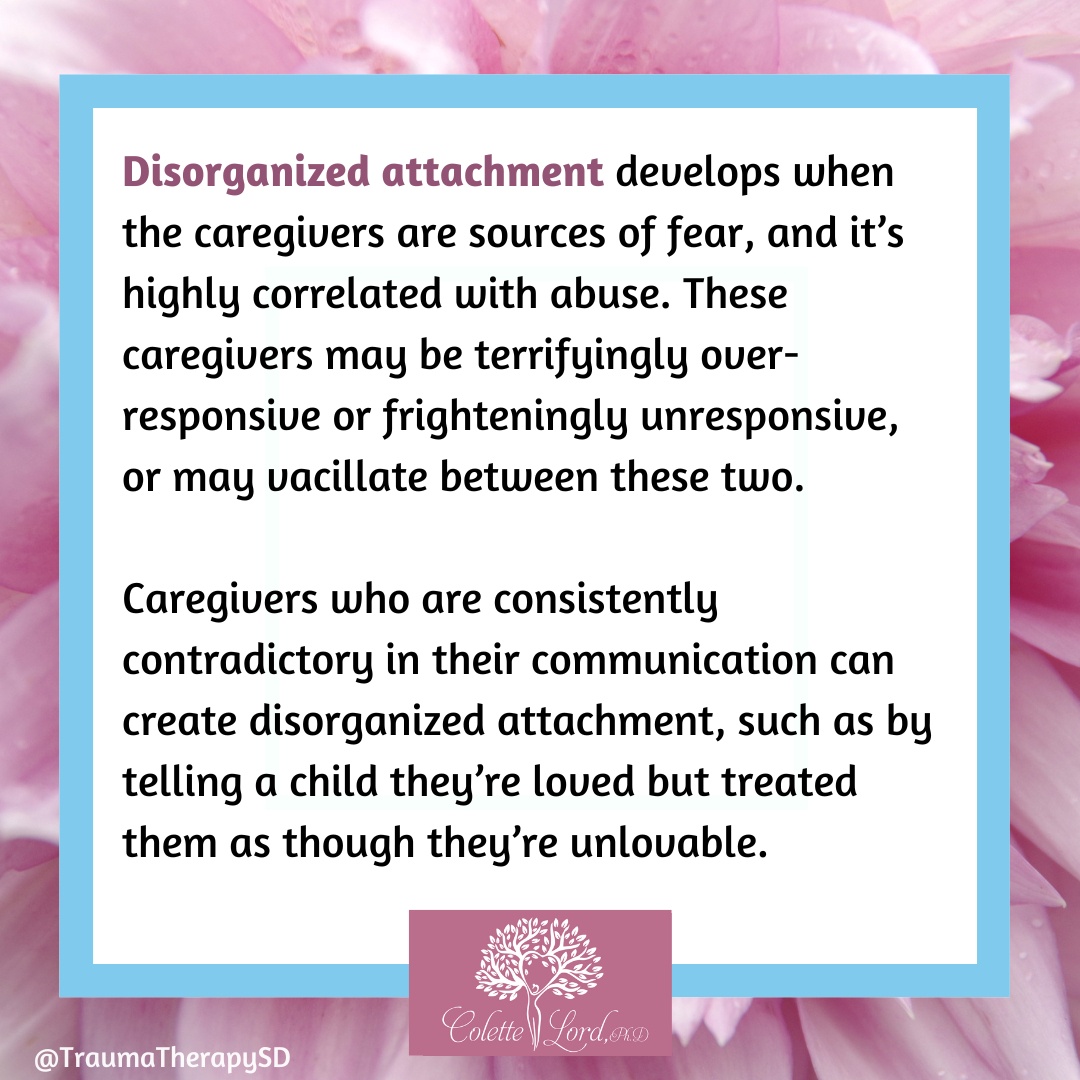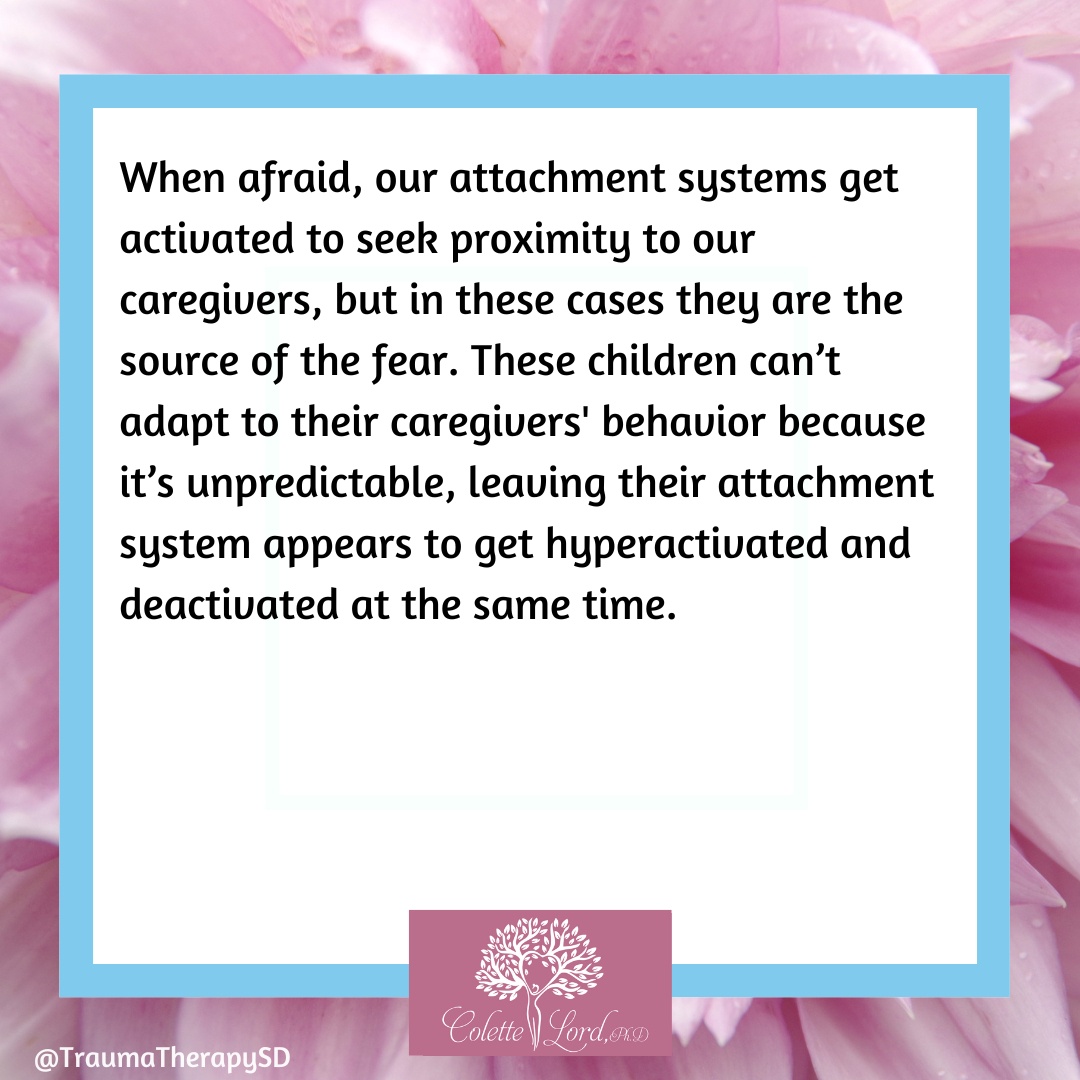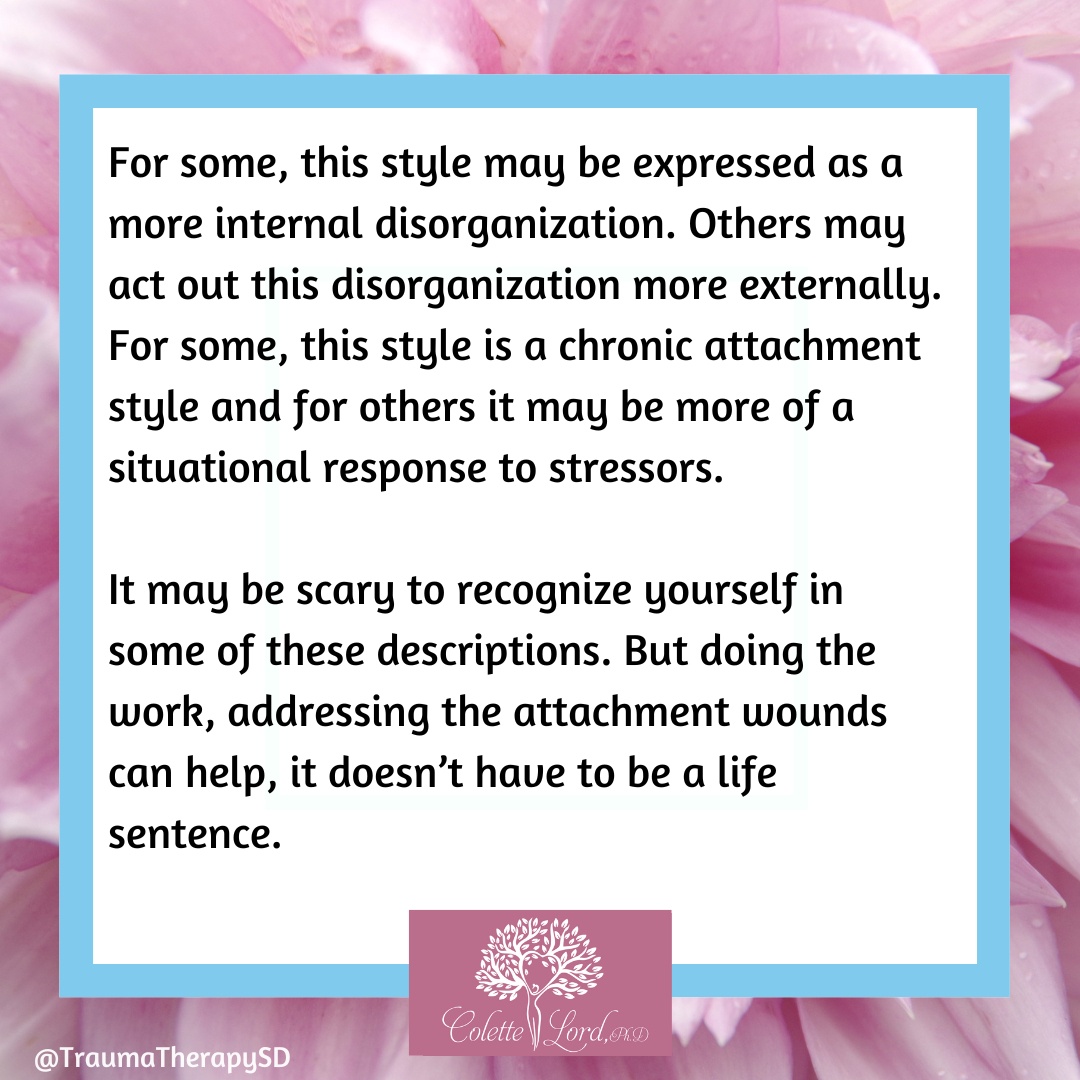Disorganized Attachment
Disorganized attachment develops when the caregivers are sources of fear, and it’s highly correlated with abuse. These caregivers may be terrifyingly over-responsive or frighteningly unresponsive, or may vacillate between these two.
Caregivers who are consistently contradictory in their communication can create disorganized attachment, such as by telling a child they’re loved but treated them as though they’re unlovable.
Family chaos due to financial stress, incarceration, addiction, etc. can impair a child’s ability to feel safe with their caregivers due to the instability and unpredictability within the home.
And sometimes children who are born with highly sensitive nervous systems can develop this attachment style due to being overwhelmed by their environment. These children want to be close to others, but when they are, their sensory system may feel assaulted, leaving them dysregulated for days.
When afraid, our attachment systems get activated to seek proximity to our caregivers, but in these cases they are the source of the fear. These children can’t adapt to their caregivers’ behavior because it’s unpredictable, leaving their attachment system appears to get hyperactivated and deactivated at the same time.
In adulthood this attachment style is called fearful-avoidant. These adults want closeness and connection, but experience it as frightening, they’re afraid of their partner being too close or too far away. They struggle to trust themselves or others in relationships.
These folks have the same need for connection as others, but they tend to see themselves as broken and unworthy and expect others to be untrustworthy or to hurt them in the end.
For some, this style may be expressed as a more internal disorganization. Others may act out this disorganization more externally. For some, this style is a chronic attachment style and for others it may be more of a situational response to stressors.
It may be scary to recognize yourself in some of these descriptions. But doing the work, addressing the attachment wounds can help, it doesn’t have to be a life sentence.















